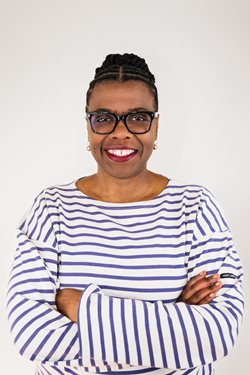A Conversation with Gaëtane Verna, Past President TAC Board
Featured Story
 Gaëtane Verna, former President, TAC and former TAF Board member
Gaëtane Verna, former President, TAC and former TAF Board member
“An important element about Toronto Arts Council is that they were having full discussions about Equity Framework before everyone else,” says Gaëtane Verna. Verna is an arts historian and arts administrator, and Director of The Power Plant Contemporary Art Gallery. While she engaged with TAC as a grant applicant and through participation in juries for different Peer Review committees, Verna’s formal relationship with Toronto Arts Council began in 2014, when she was invited to join the Board of Directors.
“I was new to Toronto and I thought it was a great opportunity for me to get a better sense of the diversity of artistic practices, different institutions - it was a really good crash course in understanding the ecology of the Toronto art scene.” Once part of the board her relationship with TAC only strengthened. In 2017, she joined the Equity Steering Committee responsible for implementation of our Equity Framework, and was President of the Board from 2019 to 2021. During her long and meaningful association with TAC she oversaw the introduction of several new policies and grants, including the recently launched Black Arts program.
The conversation about having a specific Black Arts program for Black artists and arts workers started in earnest in the aftermath of the Minneapolis police’s murder of African American George Floyd in 2020. Verna, as President of the Board was an important part of these conversations. “It was an ongoing discussion, even prior to the killing of George Floyd. But the focus of that discussion was about how we integrate Black folks within the overarching [category of] Persons of Colour.”
After the summer of 2020 as calls for social justice reverberated in different parts of the world, TAC decided to design the Black Arts program to address some of the systemic and structural barriers that Black artists arts and arts workers continue to face in Toronto.
“Individually, I was already thinking about the need of the [Black] community to have their own arts program,” says Verna. “I knew this is what Black folks wanted. But as the President, my role is to tell what I think. It was up to TAC to do the work, to speak to the community, conduct surveys and analyze, and talk to this broad group of people, and not just to the President. I don’t speak for the Black community. I speak for myself, individually. So, TAC did the work.”
In the summer of 2020, we hired Paulina O’Kieffe Anthony and Kai Ner Maa Pitana, who held consultations with 179 Black artists and art workers. Based on these consultations they made recommendations to TAC which can be accessed here. These recommendations laid the foundation for the Black Arts program.
“When developing a program, it is essential to make sure that the requirements and the processes that are already embedded in the TAC are respected, while there's also flexibility to be elastic to stretch it, in order to open it to other groups that feel excluded by the structures that were put in place without taking them into account,” says Verna. “There’s never enough money for everyone. So, TAC has to ensure that the community is part of the conversation, of how the money is being allocated, in all transparency.”